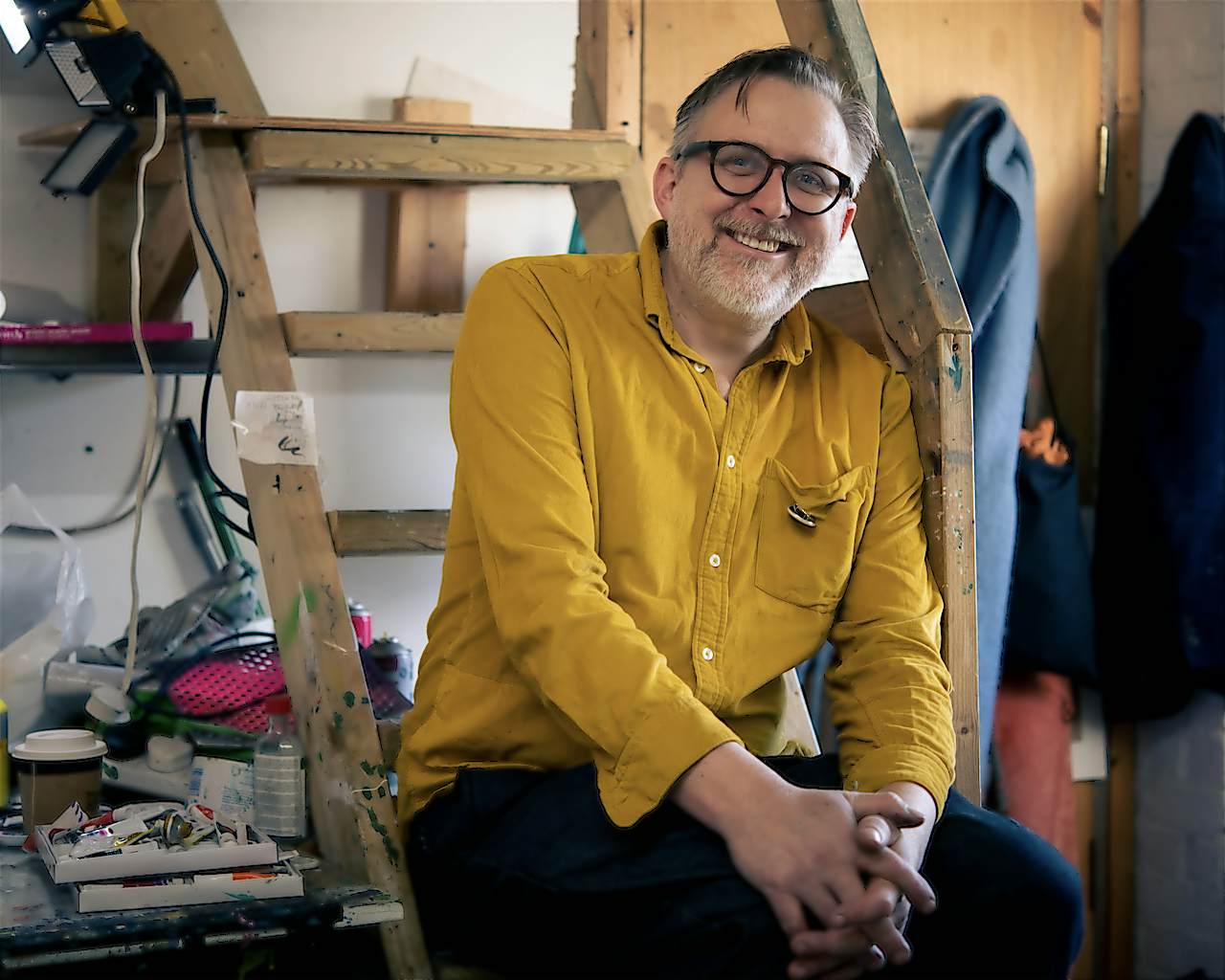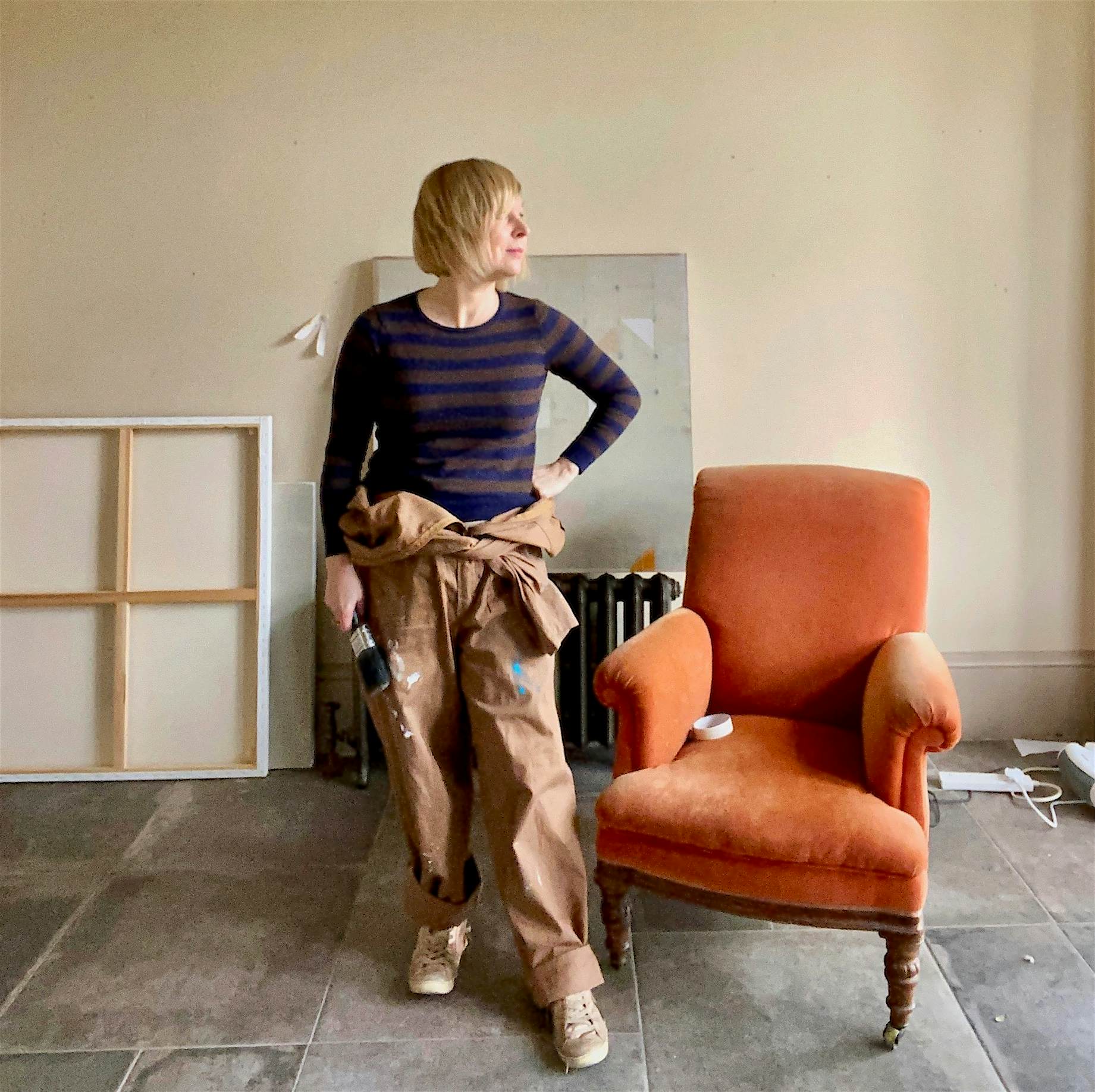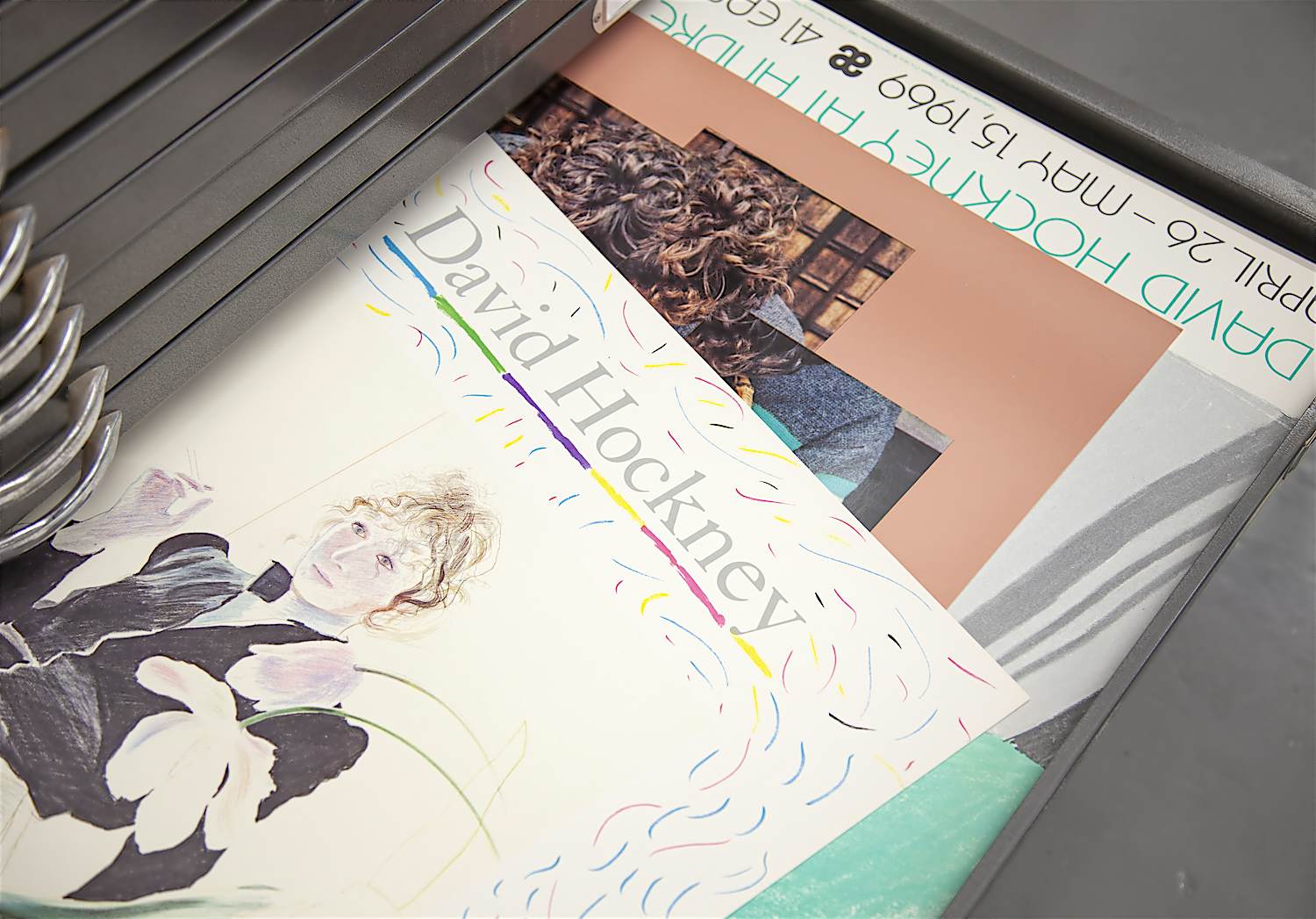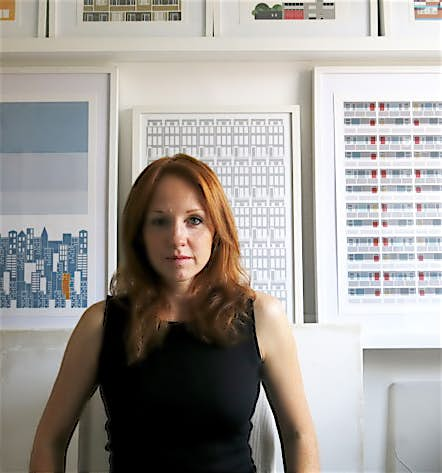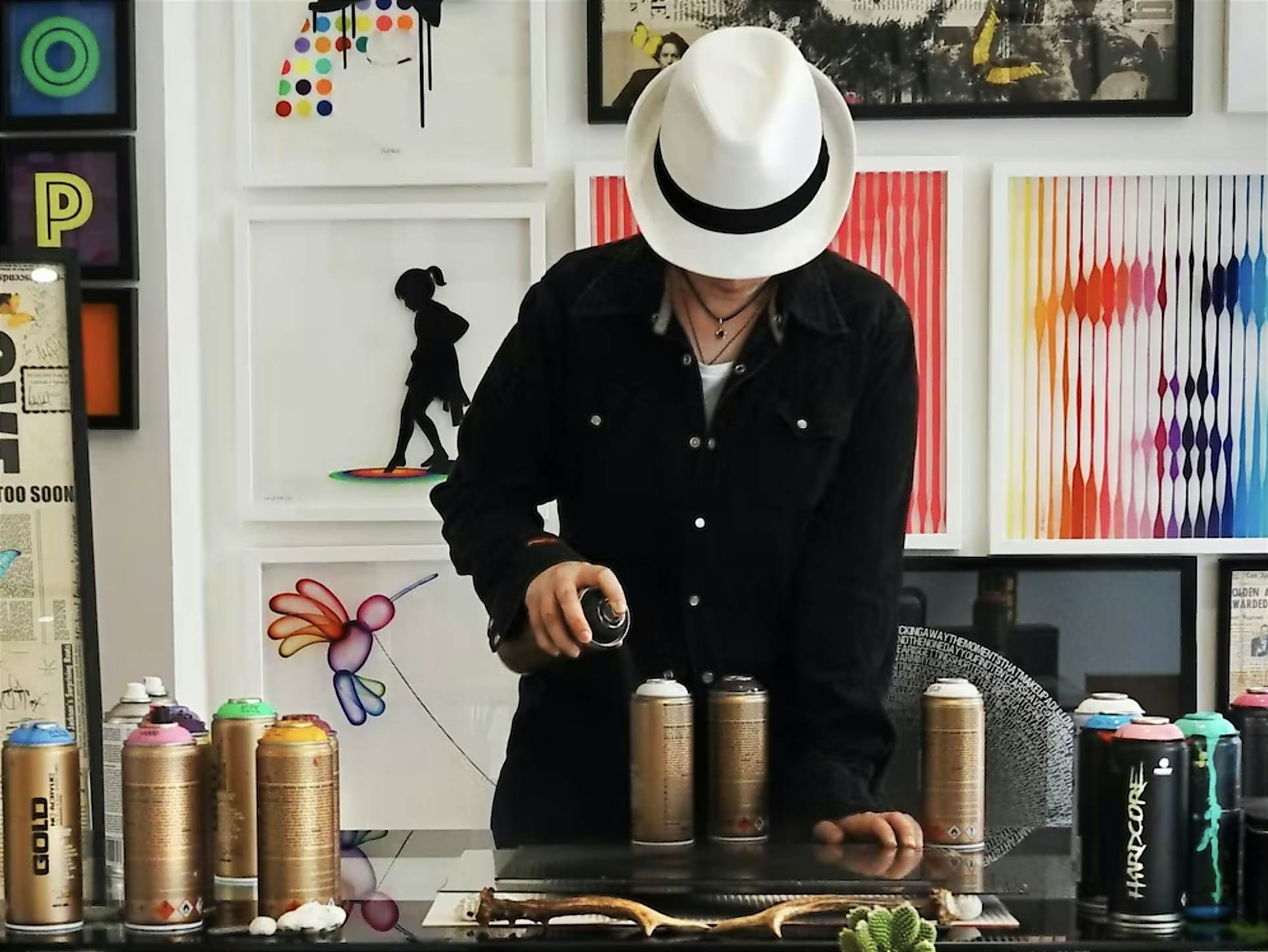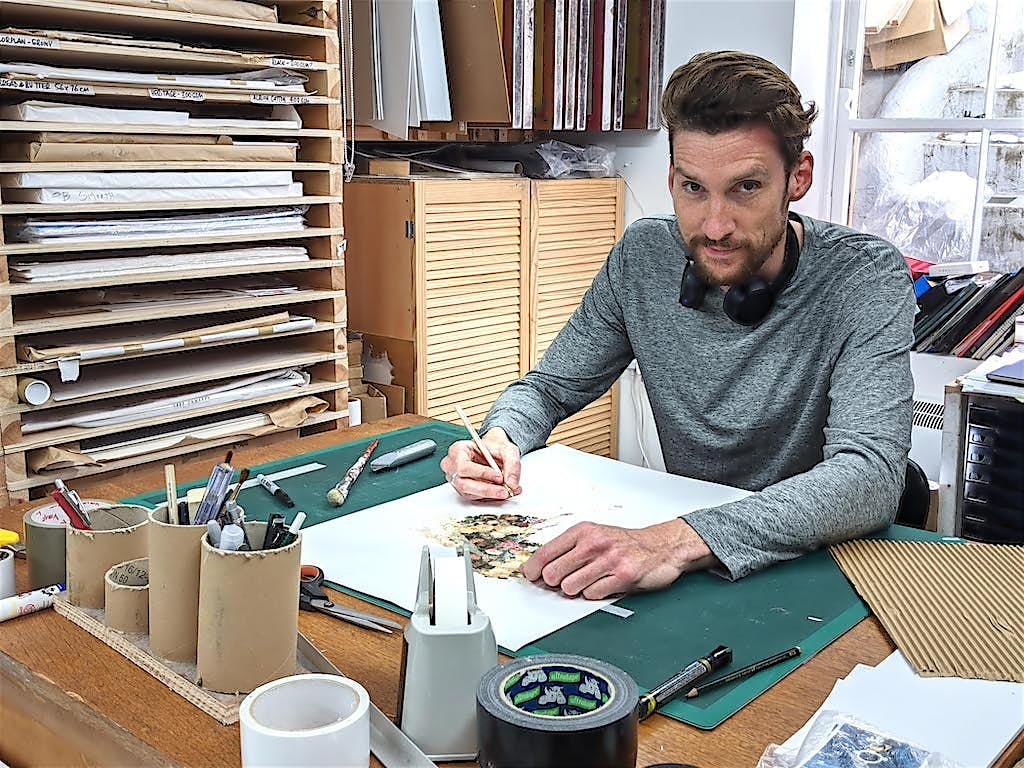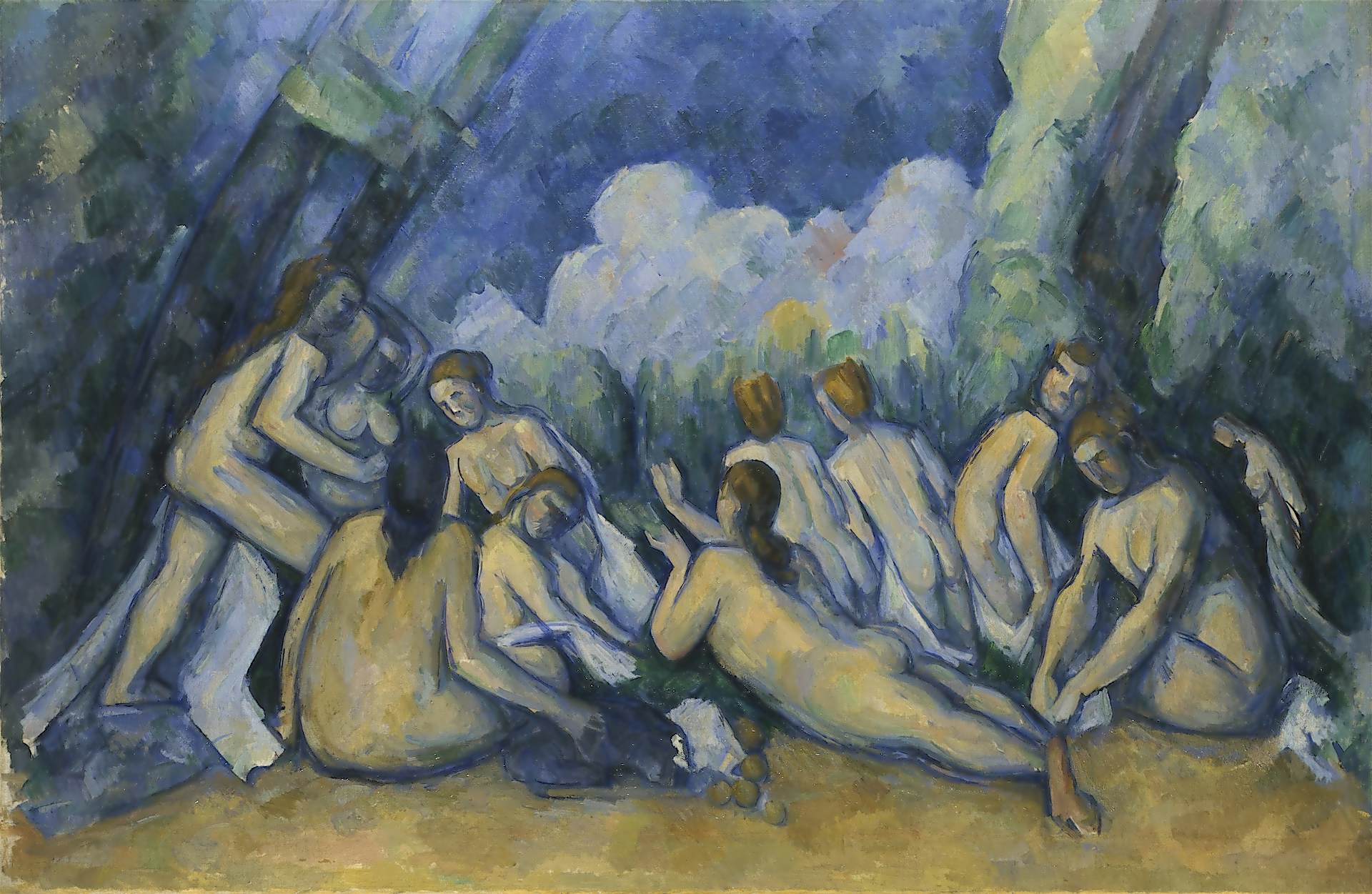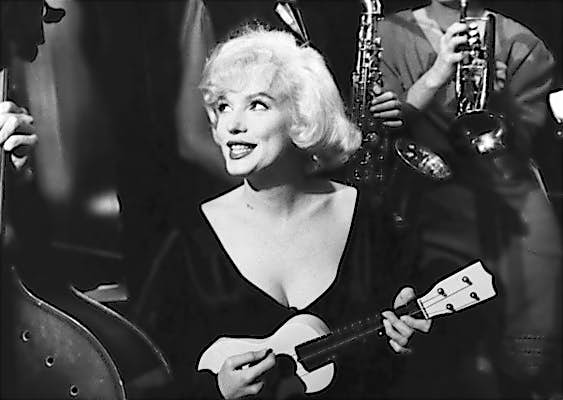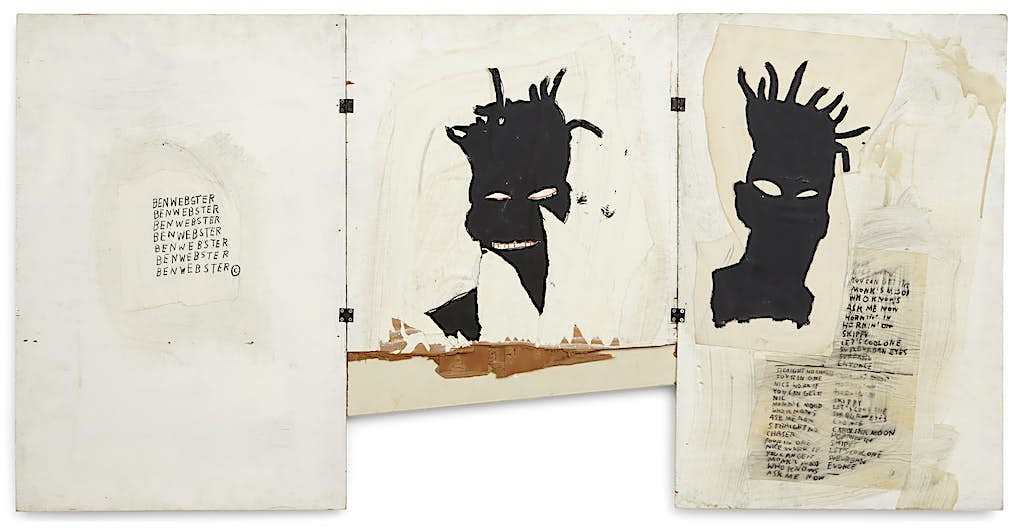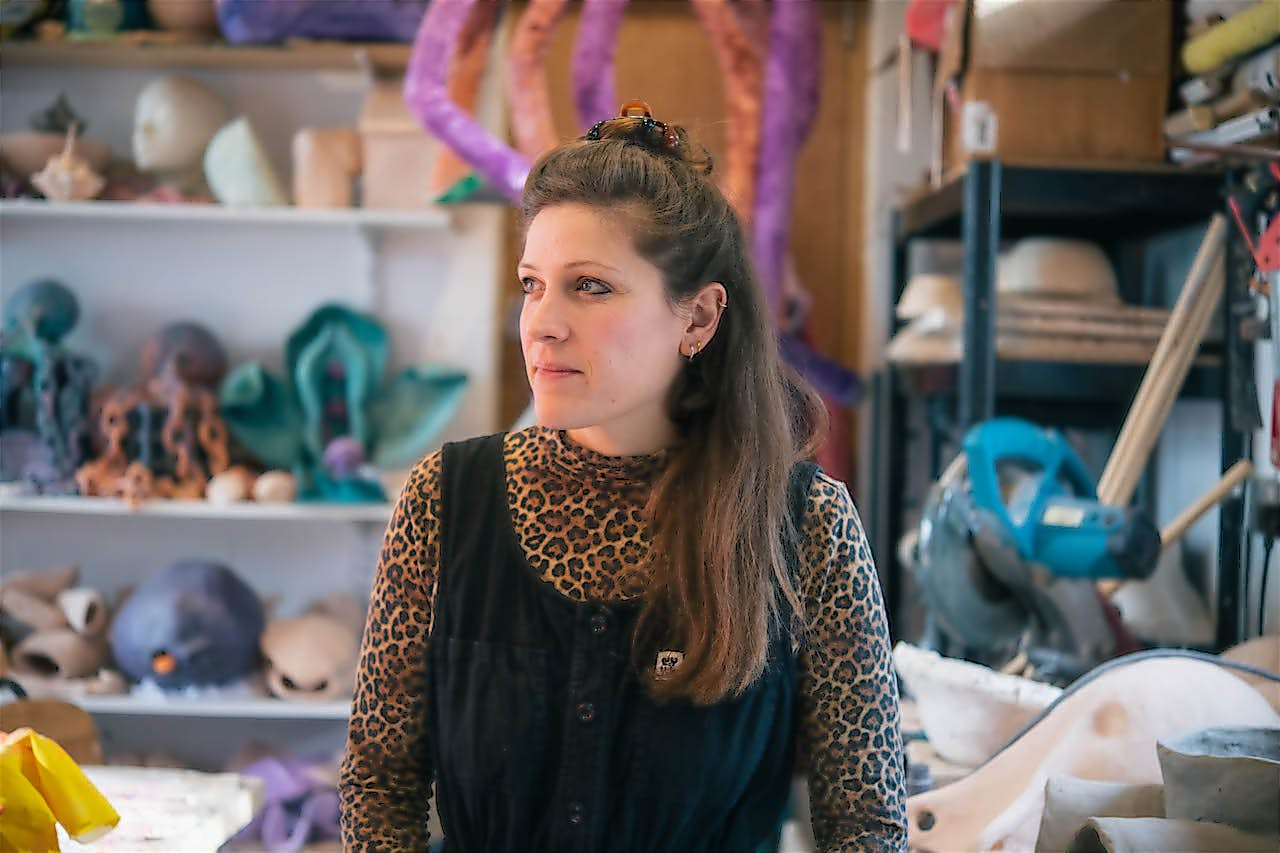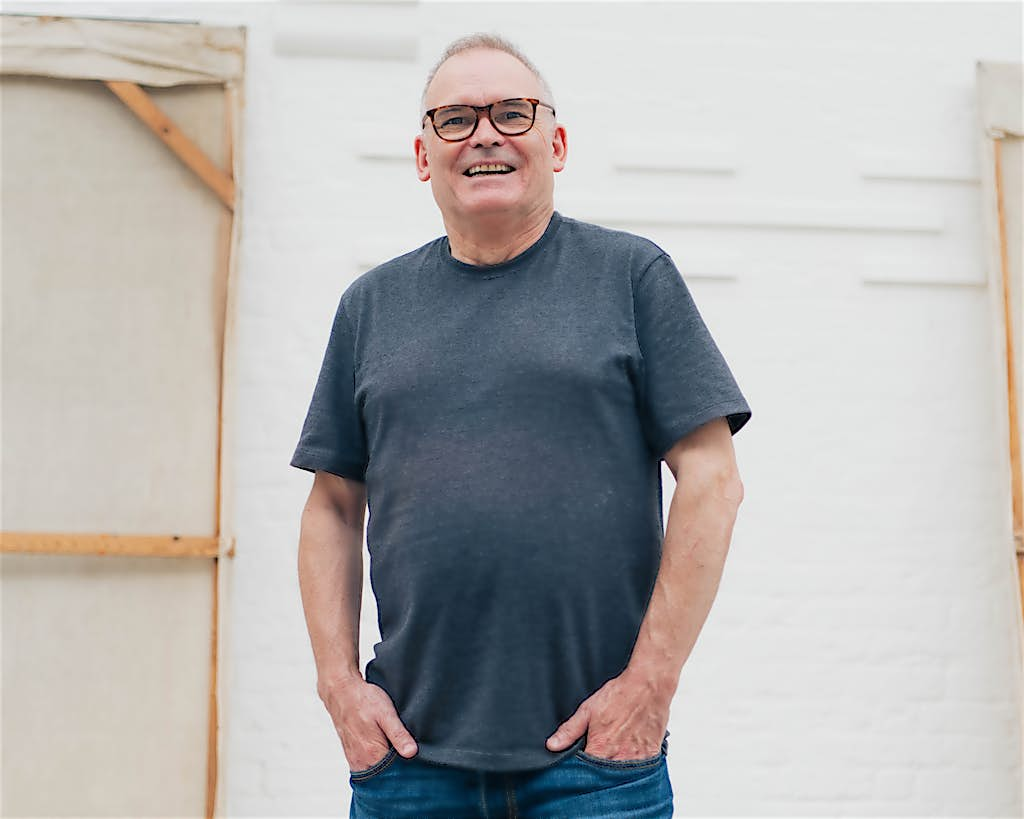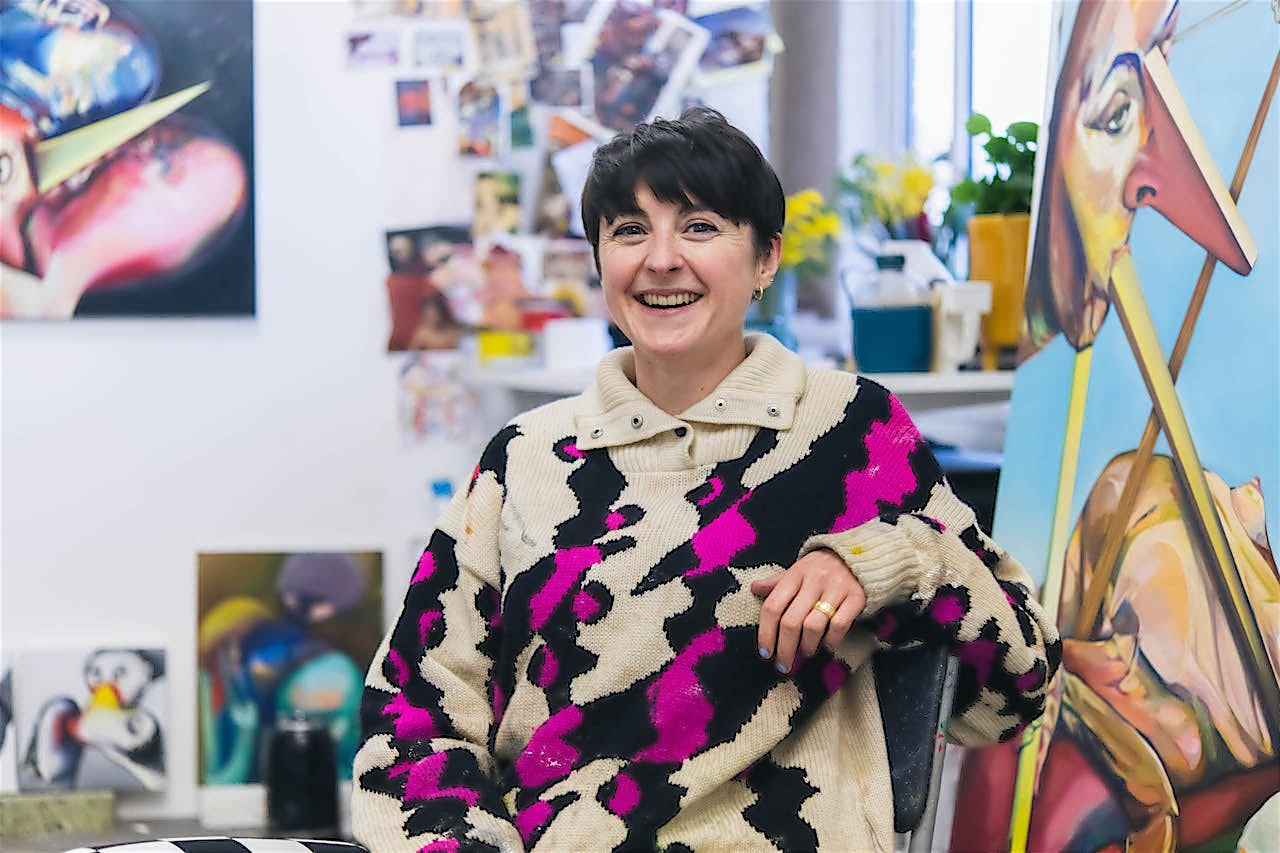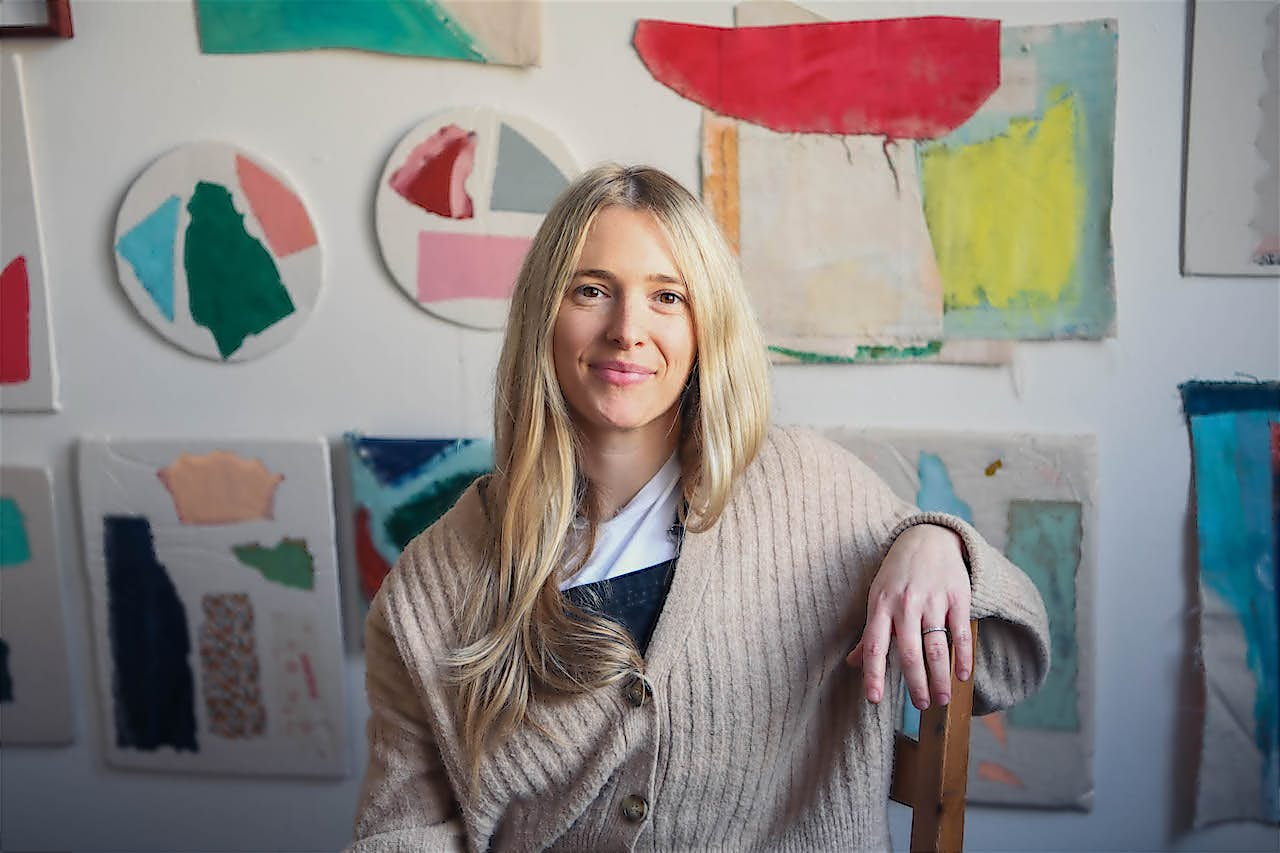Rosco Brittin’s impossibly intricate floral collages
Reading time: 8 mins
Born and bred in a video shop in London’s Kings Cross during the 80s, quirky collage artist Rosco Brittin always knew he wanted to be different. He tells us about his struggle to become a full-fledge artist after being the front man of a rock and roll band, his infatuation with flowers, and an intriguing ‘spirit genie’ that offers him creative fuel.
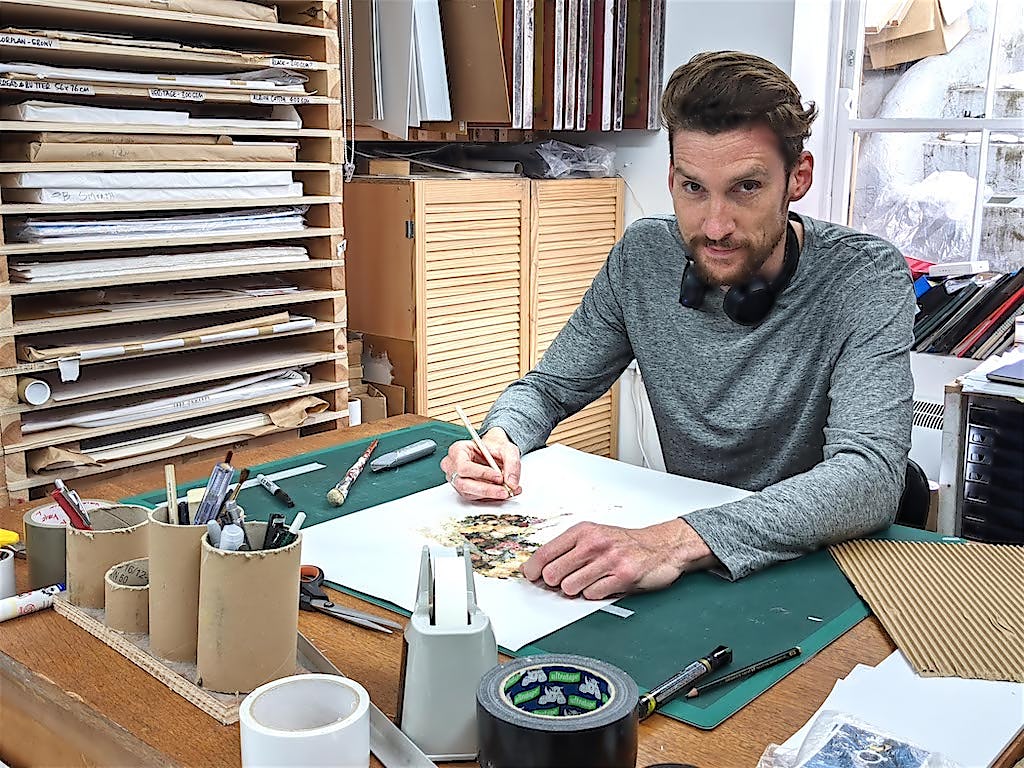
Q: Did you always know you wanted to be an artist?
A: I always just wanted to do something different. I was the lead singer in a band for a long time and I think I was really good at it. If you can be 6 foot 8 and you can be a good lead singer, you’re onto something.
Other musicians were saying to me, ‘Wow! You know how many chords? Like, 12?’ And I was a really good song writer. I realised I could do that and that was fun. Unfortunately, I liked the partying side as well. And, if you carry that on for too long, you end up as a very sad 30-year-old guy who still thinks he’s 22.
Luckily, I’ve always been creative and things changed in my early thirties. I had an epiphany moment whilst working an office job. A little voice crept in and said, ‘Ah f*** this! I’m not doing this. I’m going to go off for a bit to do my own thing.’
At first, it was a bit of a struggle but I also couldn’t imagine working in an office anymore. It also took me a while to get the tone right when I told people ‘I’m a full-time artist.’
Now, I can say it with confidence but before it felt like a poncy thing to say. I didn’t have faith in the job. But after a lot of hard work and support from my wife, it’s been amazing. Eventually, you find your confidence.

Q: How did you cope last year during the outbreak of the pandemic?
A: To be honest, it didn’t do me any harm. I mean, I know it was – and it still is – terrible but it was a crazy, fast turnaround for me. I’ve never had an influx [of commissions] like that.
And whilst some people were understandably wallowing in misery, I was walking about town with a monocle and cocktail glass in my hand. I thought, ‘This is all rather good, isn’t it!’ My wife is a fashion make-up artist and probably one of the best in her field.
She does well and it was nice that, because of my commercial success, I could support not just myself but my whole family.
Q: You do a lot of collage, has it always been that way?
A: I started off as an illustrator and I studied graphic design and advertising. There was something about being an ‘illustrator’, though. It felt too specific and lame.
Agents would say ‘We can’t help noticing that your style keeps changing every 20 minutes.’ And I would say, ‘Yeah, I know: I get bored easily.’
My brain often thinks, ‘Oh that’s a good idea, I’m gonna do it!’ People kept telling me: ‘You have to have a specific ‘‘style’’ and you need to stick to it.’ And I just thought, why? That’s nonsense. So, I said to myself, ‘Right, I’m gonna do my own work now.’
Eventually, I found my style which progressed from Frida Kahlo illustrations with famous people with vegetables on their faces and went on from there... After I sold them, I suddenly I realised I had no artwork left and I needed to be more flexible. What’s flexible? Well, an octopus.
So I thought what kind of collage can I do with that? And I came up with outer space. So I made an octopus, filled it with stars, and blended all the elements. I tried to make the nervous system out of stars. I did screen prints of that and that worked really well.
After that, I was designing some wallpaper for someone. And I got a silhouette of a seahorse. I cut up loads of bits of wallpaper and scanned lots of different flowers and leaves onto the computer.
Then I arranged them and it worked really well and people responded really well. That was when I knew I was on to something with collage.

Q: What tools do you use?
A: Originally, I started off with scalpels and sharp blades. I would advise anyone who is thinking of going into collage to not always follow those generic online videos where people use scalpels and stuff.
Nail scissors are just as good. If you’re cutting out something small, they’re fantastic. They do the job. Scalpels are great for larger pieces. It took me a while to realise that.
Q: How do you know when an artwork is finished?
I try to remind myself of a quote by David Bowie that goes something like, ‘You should create something until it no longer looks like something you could have made.’
And I think that’s marvellous. That’s what you’re trying to aspire to – to do and be something different. If it looks spectacular, you think to yourself incredulously, ‘Wow I did that!’

‘You just have to be prepared to be inspired by things you’ve seen for a nanosecond.’
Rosco Brittin
Q: Where do you find your inspiration?
A: The American singer-songwriter Tom Waits once explained that he felt a kind of 'spirit genie' offered him ideas. He said that sometimes an idea can come to him and he’ll be driving and he won’t have a pen.
But the idea will just take over his brain. It just pops out of nowhere. And if you can’t write it down, you have to physically talk to it. So you say something like ‘Look, random idea, I don’t have a pen with me, but if you want to come back to me later on, that would be great. And if you can’t, please pass it on to someone else.’
I think that’s lovely, isn’t it? That’s the way I’d like to be. You just have to be prepared to be inspired by things you’ve seen for a nanosecond. So just be aware of your subconscious…
Q: How long does each artwork take you?
A: Sometimes I can get into it and not leave the office for like a few days. And sometimes it takes 3 or 4 weeks if it doesn't look right. I think my superpower is composition. I know where shit needs to go.
When it comes to music, the reason why I could just have 15 chords, and create an entire album and write the music and direct people who were professional musicians was because I could go: ‘Right, swap that chord with that chord, and the drums should come in then, and sing over that bit.’
I knew where it would all sit. And the same is true of my artwork. There’s not even a thought process. This kind of process takes over and I just go: That’s gonna look good there. I’ll flip that around over there, and put that there.
And it just works. And when it doesn't work, that’s when you’re fighting it and you have to leave it alone for a bit. Come back after a few days and go ‘Aha! That goes there!’

Q: Do you think you’ll ever be a musician again?
A: Yeah, absolutely. Cos it makes me sad when I re-listen to the music I made. It really is good stuff. It’s good rock n’ roll, man. I was good at writing hooks.
It was catchy stuff that friends would text you a few days later and say ‘That bloody song, man, it’s stuck in my head!’ I’ve put my music career on pause for now.
But I will return for my kids. I want them to see me rocking out on stage. When I play them my music and I say, ‘Look this is daddy singing, and they’re like ‘Get outta here!’
Q: What do your children think of your work? Do they give you ideas?
A: They’re always nicking mine, man. They always come back to me with collages full of leaves. And I’m like, ‘I know you’re only five but I would absolutely take you to court… If I had the money. Absolutely rinse you out.’
But no, seriously, it’s nice: my two-year-old has started to identify my work hanging on our walls at home. When he sees my stuff, he points at it and yells ‘Daddy!’ It’s cool that he actually identifies some kind of creation, not just a thing on the wall.

Q: You work with lots of different people on social media, when did you start using social media to promote your work?
A: As much as it is the spawn of Satan, I do love Instagram. I find that the more you accept the fact that it’s a business and accept that as the business evolves, it can be taken in all sorts of directions. It’s also nice to meet people and you get nice comments.
I get lots of people saying ‘I saw your work in a shop window in Devon and now I follow you. It’s really nice, man. It doesn’t pay the bills but you do sit back with a smile on your face afterwards. Then reality sinks in and you think, ‘Well, you gonna buy anything then?!’ Instagram obviously doesn't pay the bills.
‘I like the idea of an idea that transmits instantly and then it materialises before your eyes.’
ROSCO BRITTIN
Q: There’s a lot of flora and fauna in your work, do you take inspiration from the outdoors?
A: Definitely, man. My love for flowers has grown. Sometimes flowers are so stunning to look at I have to stand there and look at them and take a picture. I just revel in it.
I also make it kind of sexual as well which is funny when I get to post things on social media. I’ll say, for instance, ‘This rose is so beautiful, I may have to have sex with it.’ Or, ‘I would absolutely go to bed with this iris.’ And it always gets a laugh. No, in all seriousness, flowers really do inspire me.
Q: What’s the best part of being an artist?
A: The groupies. No, if I’m being serious, I would have to say the idea of freedom. Reflecting on me being an actual artist, my little sister said to me recently, ‘Well at least you’re really doing it, aren’t you.’ That was nice.
Another friend of mine who is a great screen printer wrote on a dollar bill, ‘Do what you love, and the money will follow’. And that’s always stuck in my head. And if an artwork doesn’t work out, don’t stop. Find another way of doing it. Get a part-time job, but don’t stop doing it.
If, like me, you’ve got a brain that always says ‘I wonder what that would look like with that, let’s find out…’ you have to keep creating. Otherwise, you’ll become quite depressed.
I think that’s common with people working office jobs. There’s a lot of creative people that feel like they want to purge ideas. And all they have as their outlet is adult colour books. You need something else. Something more meaningful to stimulate you.
Q: What’s on the horizon for you?
A: Hopefully, I am moving towards a piece of work where I can sit back and say, ‘That’s it!’ It’s going to be something great and I can feel it. I used to get that feeling when I was writing songs. I could feel it in my fingers and I’d be like, ‘F***! I’m gonna write something!’
The creative spark for my art is the same. That feeling, it’s strange. It comes over you like whoosh! I like the buzz. And I think, ‘Right, if I mix that with this, and then I’ve got an old bit of this, and what would happen if I put that there…’
I like the idea of an idea that transmits instantly and then it materialises before your eyes. I love that feeling when you arrange certain pieces of paper together and then you step back and look at it and say, ‘Aha, yes, that’s it!’
Related stories
Subscribe to our newsletter
Be the first to hear about our new collections, limited edition launches, and enjoy artist interviews.
By subscribing you agree to our privacy policy.
Contact us
01273 511 942
View our Christmas hours here
All art prints and images on this website are copyright protected and belong to their respective owners. All rights reserved.




